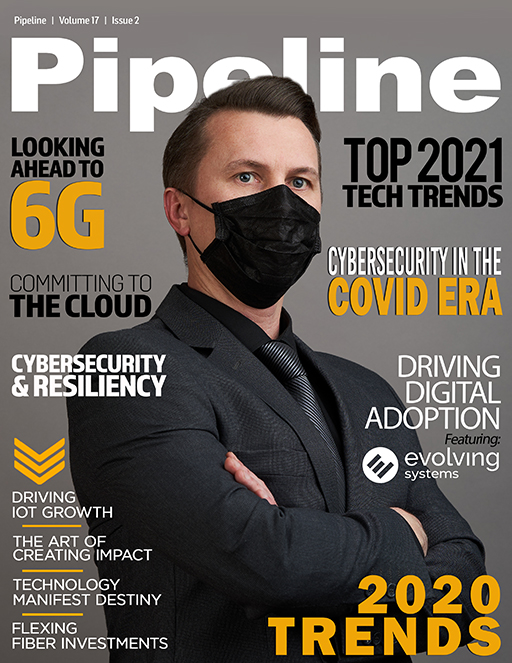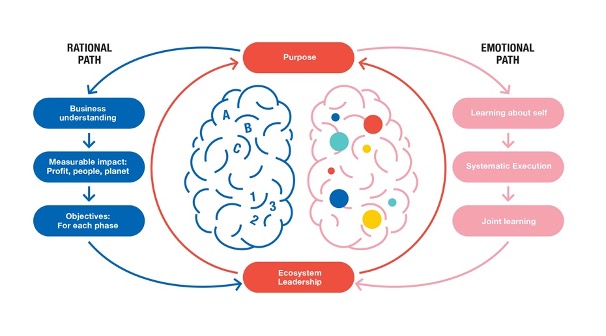The Art of Leading and Creating Impact
objectives and an initial view of the expected impact. Rationally, purpose considers profit: the financial foundation, the importance of people and the planet, and the broader socioeconomic and environmental objectives that organizations can no longer ignore. It provides a sound basis to align the ecosystem and related organizations and people in a systematic way.
Emotionally, a well-articulated purpose connects and energizes customers, partners and employees of participating organizations in the ecosystem. Professional people with zeal can achieve
extraordinary things together. Structuring the chaos around the purpose contributes positively to well-being and reduces long-term stress. It ensures the renewal and innovation that are essential
for value creation in constantly changing business environments.
While the purpose marks the logical starting point of the ecosystem journey, it’s crucial to understand that ecosystems are dynamic and changing. In real life, ecosystems rarely proceed from one
phase to another as planned. They may need to take a step back to iterate and then reiterate. Partners may come in and leave. People may change. Building ecosystem leadership capabilities by
focusing on purpose as well as the rational and emotional elements of the journey provides a way to take a snapshot of various situations, to revise the initial purpose and the augment the
capacity to adjust. Purpose acts as a foundational element of the “art” of leading ecosystems for impact.
Figure 1: Purpose, feeding the rational motivation and engaging the emotional side.
[click to enlarge]
Organizing for the future
Traditional structures or leadership styles are challenged. What worked in the past might be irrelevant today.
The world is full of unsolved problems and the triggers for the ecosystems vary from determined individuals to multi-player organizations announcing grand challenges to be solved. Each ecosystem is unique. Getting started is not only about the idea. It’s about key people who have the capability and capacity to bring the initial ideas together, to define shared purpose in a compelling and engaging way. Key people also understand that the purpose and goals continue to evolve along the way of the ecosystem journey, as do the roles within the team.
This means careful selection of the ecosystem partners. Organizations must evaluate along several axes to identify those who share the passion to solve problems and the courage to explore the unknown, have the necessary skills, can manage the uncertainty and accept flexible organizational setup and positions in the ecosystem. Partners may represent organizations of different sizes with very different cultures and personalities.
This calls for trust created by framing the challenge rationally so that it makes sense to all partner organizations—and at the same time engages and excites individual people to create the emotional connection. This connection forms the foundation for successful collaboration and personal commitment to deliver. It also prevents “power games” between participants from diverse backgrounds and organizations of different sizes. Structure creates safety. A continuously evolving ecosystem calls for the “art” of creating governance structures that are both flexible and safe. In this context, flexibility means staying true to the nature of ecosystems by letting ideas and people bloom. Structure provides just enough strategic focus from individual organizations’ point of view and psychological safety from the personal point of view. Keeping governance systematic while avoiding overly rigorous management and reporting practices helps keep the participating organizations updated and the teams in the ecosystem aligned and committed.




















